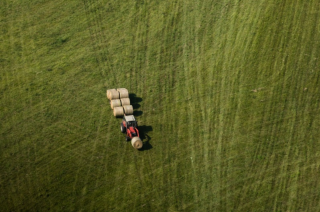The 2018 Farm Bill contains substantial enhancements for land conservation which will likely benefit the Chesapeake watershed. (Photo: Chesapeake Bay Program)
The 2018 Farm Bill, enacted in December, sets out five year funding for a wide range of federal programs. From a Chesapeake conservation perspective this is good news.
Chesapeake Bay Commission Executive Director Ann Swanson and Pennsylvania Director Marel King reported on the new Farm Bill and other federal topics at last week’s meeting of the Chesapeake Bay Program Principals Staff Committee. Here are a few highlights of their report on the Farm Bill’s benefits for conservation (note all numbers are national totals):
- Regional Conservation Partnership Program (RCPP): The authorized mandatory funding level increased from $100 million per year to $300 million per year, split between two funding pools (State and Critical Conservation Areas). With the Chesapeake as a Critical Conservation Area, this is expected to bring increases in land conservation funding for the watershed.
- Agricultural Conservation Easement Program (ACEP): Funding for conservation easements is raised to $450 million per year, a $2 billion increase over ten years.
- Conservation Reserve Program (CRP)/Conservation Reserve Enhancement Program (CREP): The acreage cap on participating lands is raised, effectively increasing available funding. Management payments for maintaining and enhancing riparian buffers will now be at up to 100% of costs.
- Environmental Quality Incentives Program (EQIP): Funding increases from $1.75 billion (2019) to $2.025 billion (2023). States may identify up to ten most effective conservation practices to receive 90% cost share.
All in all, the Farm Bill is expected to produce conservation dividends for the Chesapeake for the coming years. Details will follow from US Department of Agriculture agencies as program guidance is developed in coming months.

